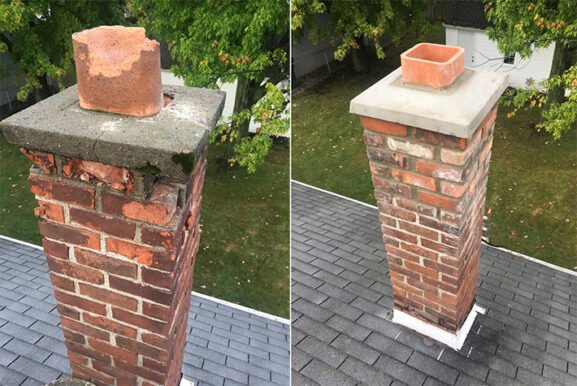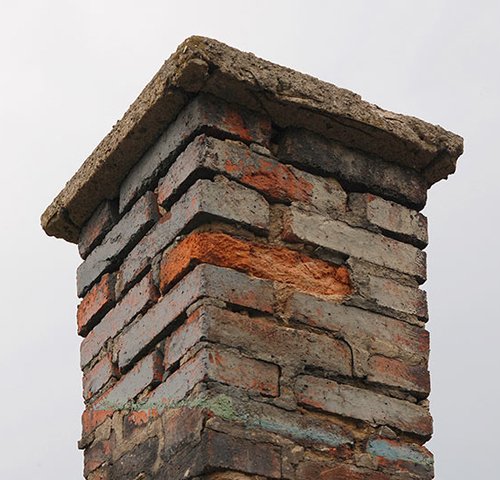Why Now Is the Right Time to Address Chimney Crack Repair Cost in Your Home
Key Takeaways
- Chimney cracks can lead to costly structural and safety issues if left unaddressed
- Repair costs vary widely depending on the type, size, and location of the crack
- Preventative maintenance is often more affordable than emergency repairs
- Professional inspection is essential for accurate diagnosis and long-term repair planning
Understanding the Risk of Chimney Cracks
Cracks in chimneys are not just a cosmetic issue. Over time, they can grow deeper and spread, threatening the structural integrity of the chimney and, in many cases, the home itself. These cracks may allow moisture to penetrate the chimney system, leading to mold growth, brick deterioration, and even interior water damage. In colder regions, freeze-thaw cycles can expand these cracks further, compounding the damage with each passing season.
More seriously, cracks in the flue or masonry can allow combustion gases such as carbon monoxide to seep back into the home. The result is a potential health hazard, especially in tightly sealed or poorly ventilated living spaces.
Given the safety implications and the potential cost of further damage, understanding the cost of repairing chimney cracks is crucial for homeowners.
What Affects Chimney Crack Repair Cost
The cost to repair chimney cracks can vary significantly depending on several key factors. Understanding these elements helps homeowners make informed decisions when budgeting for repairs.
Type of Crack
Hairline cracks in the mortar are generally the least expensive to repair, often requiring simple tuckpointing or sealing. Larger vertical or horizontal cracks, particularly those in the flue or the chimney crown, are more complex and may need structural reinforcement or partial rebuilds.
Location of the Damage
Cracks located at the chimney crown or in the flue liner typically cost more to repair because of their complexity and the specialized tools required. External cracks in the masonry may be easier to access and treat, though extensive surface damage can still push up costs.
Chimney Material
Brick, stone, and prefabricated chimneys each come with different repair approaches and associated costs. For example, stone chimneys often require more labor due to their irregular shape and the materials involved, whereas prefabricated systems may need complete part replacements.
Height and Accessibility
Chimneys located on multi-story homes or with difficult roof access increase labor costs and equipment fees. Scaffold setup or safety harness systems might be necessary, which can drive up the total repair cost.
General Cost Ranges for Chimney Crack Repairs
While costs will vary based on your location and the specifics of your chimney, the following ranges give a general idea of what homeowners can expect to pay.
- Minor mortar joint repairs or tuckpointing: $150 to $500
- Sealing small surface cracks: $200 to $600
- Crown crack repairs using crown coat sealant: $300 to $700
- Replacing damaged flue tiles or liner sections: $1,000 to $3,000
- Partial chimney rebuild due to structural cracks: $2,000 to $5,000+
In cases where water damage has occurred due to prolonged exposure, additional costs for interior wall repairs, insulation replacement, or mold remediation may also come into play.
Signs That Indicate Immediate Repair Is Needed
Not all chimney cracks are visible from the ground, and many go unnoticed until a routine inspection reveals the issue. However, some signs suggest a problem that should be addressed quickly:
- Visible stair-step or vertical cracks in the brickwork
- Crumbling or missing mortar between bricks
- Water stains on interior walls near the chimney
- Loose bricks or shifting chimney structure
- A smoky smell inside the house even when the fireplace isn’t in use
If you notice any of these signs, it’s important to act fast. Postponing repairs can lead to higher costs down the line.
When to Call in a Professional
A certified chimney professional should inspect your chimney at least once a year. These experts can assess the extent of any cracks and recommend an appropriate repair strategy. Some minor issues might be fixable through DIY methods, but most structural problems require a trained eye and professional-grade materials.
According to the Chimney Safety Institute of America (CSIA), using certified professionals ensures the repair is done to code and that your home remains safe for use after the work is completed. You can learn more about chimney safety standards and inspections by visiting the CSIA official website.
Ways to Save on Chimney Crack Repairs
Even though chimney repairs can be costly, there are ways to manage or reduce the expense.
Schedule Repairs During the Off-Season
Contractors tend to be less busy in the late spring and early summer months, and you may be able to negotiate a better rate during this period.
Bundle Chimney Services
If you’re due for a chimney sweep, inspection, or cap replacement, bundling these services can often reduce the per-job cost.
Use Preventative Maintenance
Regular maintenance and inspections catch small problems before they grow into expensive repairs. Sealing small cracks early can prevent moisture infiltration, which is often the root cause of larger structural damage.
How Location and Climate Influence Repair Costs
Where you live plays a large role in the overall cost of chimney crack repair. In regions like the Northeast, where winter temperatures drop below freezing, chimneys are subject to more stress due to freeze-thaw cycles. This often leads to more extensive cracking, driving up both the frequency and cost of repairs.
In coastal areas, salt air can accelerate the breakdown of mortar and brickwork, leading to earlier signs of cracking and deterioration. Homes in these regions may need more frequent assessments to catch early signs of wear.
Long-Term Impact of Ignoring Chimney Cracks
Ignoring cracks in your chimney might save you money in the short term, but it can lead to more serious issues down the line. Moisture intrusion from even minor cracks can cause wood rot, attic leaks, or structural shifting. The longer these problems persist, the more expensive they are to fix.
A well-maintained chimney adds not only safety but also value to your home. On the other hand, a damaged or visibly cracked chimney can reduce curb appeal and become a red flag during home inspections if you plan to sell.
Investing in Prevention for Future Peace of Mind
Taking proactive steps to protect your chimney today can save you from major repair expenses tomorrow. By budgeting for regular inspections and addressing cracks early, you ensure the long-term performance of your fireplace system and the safety of your home. When chimney care becomes part of your seasonal maintenance routine, small issues remain small — and your home stays protected year-round.

